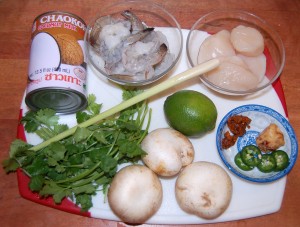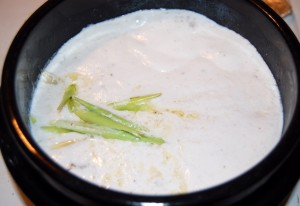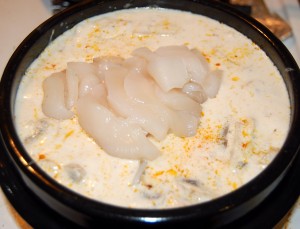Thank you to all readers who have helped out on the Q&A thread! I have been exceedingly busy and am still behind on some important obligations, so it is difficult to find time to answer questions. But I do intend to respond to everyone’s questions. I’m grateful to those readers who are sharing their knowledge to help others.
[1] Paleo Summit starts tonight:
Sean Croxton’s Paleo Summit begins at midnight tonight with presentations by Mark Sisson and Diane Sanfilippo. Presentations are free for 24 hours, when a new set of presentations appears. The summit will continue until interviews with 23 speakers, including myself, have appeared.
There is a Summit Upgrade package of videos, audio files, transcripts, and bonuses that will go on sale Tuesday.
It’s a mini-Ancestral Health Symposium, but without the travel. I understand that 14,000 people have already registered. Check it out!
[2] Music to read by: The Seekers perform “I’ll Never Find Another You” in 1993:
Judith Durham’s voice is as lovely as ever, and she looks fantastic. Compare how she looked in the 1960s:
Nowadays when I see someone who’s aged gracefully I wonder what her diet is like.
[3] Raw Milk Debate: I was privileged to attend a recent debate over raw milk at Harvard Law School (site of the upcoming Ancestral Health Symposium), featuring Sally Fallon Morell of the Weston A Price Foundation and three others, two on each side. All of the panelists were great and the debate was excellent. And it’s available on video:
[4] Interesting posts this week:
I was in New York for a business trip on Thursday and was able to stop by at CrossFit NYC to talk to some of their members. John Durant was there and mentioned my ranking of the different meats in his Friday post.
Good news for Court Wing, head trainer and co-owner at CrossFit NYC: walking speed is a good indicator of future lifespan.
The Daily Mail wonders why today’s women are developing gray hair in their 20s. Michael A Smith wonders whether tyrosine can reverse it.
The New York Times reports on a study showing that the aging eye blocks blue light, so that the elderly need more sunlight and blue light to maintain their circadian rhythms and health.
Chris Kresser asks: Is chlorine in shower water making you sick?
Huffington Post reports that BPA’s Obesity And Diabetes Link Strengthened By New Study.
Gregory Cochran: Doctors aren’t innovators and don’t generate new knowledge.
J Stanton informs that some Japanese with yeast infections get drunk from rice; in extreme instances blood ethanol concentrations may reach fatal levels of 80 mg/dl or almost 1% blood alcohol concentration.
Seth Roberts explains what Richard Bernstein taught the world.
ScienceDaily reports that Vitamin D up to a serum 25(OH)D level of 50 ng/ml helps reduce inflammation.
Fight Aging! reports that stem cell transplantation extends lifespan in mice.
Bix reports that glycogen in the brain is increased by exercise.
Prof Dr Andro says that slower weight loss works better. We argued that in our book also. Focus on health first, weight second, and you’ll lose weight more successfully.
Peter Janiszewski reports that food reward is self-regulating: The more you eat something, the less you like it.
Julianne Taylor has lost an inch from her waist and improved her Raynaud’s. Paleo Pepper has benefited from adding carbs to her diet: “Since adding carbohydrates to my diet– call me crazy– I’ve been less sickly. The acne scars on my face heal much more quickly than they used to. Most importantly, my breasts and hips have gotten larger, and my thighs a bit I guess, but my stomach has stayed flat flat flat. How nice is that?”
Greatist.com has released an infographic, The Ultimate Guide to Eating Paleo.
Coming soon: Test-tube meat.
Via Newmark’s Door, “How Cancer Drugs Make Cancer Worse and Kill Patients.”
In North Carolina, a child’s homemade lunch was seized and the child forced to buy chicken nuggets because her lunch didn’t comply with Federal guidelines.
In a post relevant to my conversation with the Peat-atarians, Stephan Guyenet asks whether fructose sugar can cause obesity. His answer:
[H]igh-sugar diets don’t necessarily produce body fat accumulation in humans, and they can even allow body fat loss under some circumstances, but are there situations where sugar can cause fat accumulation? The answer is an emphatic yes….
[E]xcessive consumption of refined sugar can promote elements of the metabolic syndrome, and this is due specifically to its fructose content.
Fortunately, Stephan projects that US sugar consumption won’t reach 100% of calories until 2606.
Good news for pet lovers: Cats can serve as blood glucose monitors.
[5] Cute animals:
Via Aravindan Balasubramanian.
[6] The competition is heating up: Hitler has decided to start a Paleo blog:
(Via Stabby.)
[7] How the brain ages: A fascinating plot at Marginal Revolution:
[8] Not the Weekly Video: I hope this Chinese candy artist is using safe sugars!
[9] Shou-Ching’s Photo Art:
[10] Weekly video: We might as well wrap up the pork series with evidence that pigs will eat almost anything:
± I.M.F. ± from PlusqueMinusque on Vimeo.
Via Naked Capitalism




























Recent Comments